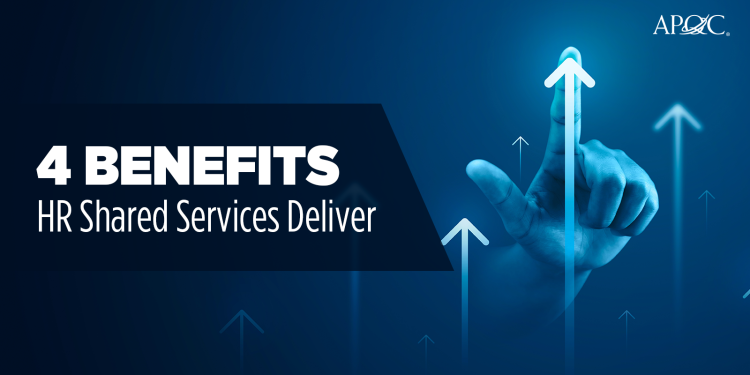
Throughout my 10+ years at APQC, HR shared services has been one of the hottest topics for our members—and for good reason. The shared services delivery model moves responsibility for high-volume transactional HR work from business-embedded HR partners to HR staff working in a centralized services organization. Leveraging standard HR processes and technologies, an HR shared services organization can deliver many business benefits including:
- lower HR costs,
- faster HR response times,
- higher quality HR services, and
- more strategic collaboration between HR business partners and business leaders and managers.
Recently, we completed the eighth cycle of the APQC and ScottMadden HR Shared Services Benchmarking Study. I am excited to share that Karen Hilton and Molly Donofrio, partners in ScottMadden’s Corporate & Shared Services practice, will be discussing the benchmarking results on an upcoming APQC webinar.
I sat down virtually with Karen and Molly for a preview of the topics they will be covering on the webinar. I also asked them about the priorities and challenges they are hearing about in their work with HR shared services clients.
Here are a few key takeaways from our discussion, but to tap into their full insights on current HRSS trends and performance drivers, please join our upcoming webinar, The Latest Trends and Performance Levers for HR Shared Services Organizations.
What are top priorities for HR shared services organizations today?
HR shared services organizations (SSOs) are focused on two main priorities today. First, considering uncertain economic times, it’s become increasingly important for SSOs to demonstrate value to the business. This comes in two primary ways – efficient delivery and valuable insights. SSOs must continue to look at their operating model in terms of cost and efficient performance. Benchmarking can be key to understanding current performance and identifying areas to drive further value.
The second aspect of this is using operational data to provide valuable insights to the business. HR SSOs have a wealth of information at their fingertips and through data analytics, this information can be used to provide insights to the business to aid in planning and program development. Examples include analyses looking at program adoption, employee turnover and hiring trends, and the ways users interact with HR platforms.
The other main priority is providing excellent customer service and ensuring a positive user experience. It is important that employees and managers want to use the services of the SSO even if use is mandated. This excellent service facilitates further expansion of the service delivery model to aid in providing increased value to the business.
What challenges do HR shared services organizations need to overcome to meet these priorities?
Like every business, an HR SSO may experience challenges in attracting and retaining talent, in continuous improvement, in effective use of technology and in ensuring that technology and tools are up-to-date and meeting the demands of their customers. Taken all at once, these challenges can be overwhelming and can be hard to address while managing the day-to-day.
SSO leaders can assess each priority and challenge and identify opportunities for change and growth and align these to their strategic and operational planning. They should involve their continuous improvement focused people in this effort. During our upcoming webinar, we will share some frameworks and goals that can be used in these plans.
What are some of the biggest changes that HR shared services organizations have experienced over the past few years?
The most significant recent change in the landscape of HR shared services has been the virtual workforce of the post-pandemic era. SSOs both support employees and managers who are working virtually and operate with a group of virtual or hybrid workers. Both situations come with positives and challenges that influence how SSOs operate and grow today.
You are presenting on an upcoming APQC webinar: The Latest Trends and Performance Levers for HR Shared Services Organizations. What can attendees expect to learn?
Attendees can expect to learn about a framework for assessing their operations that encompasses different aspects of their HR delivery model. We’ll start by sharing benchmarks focused on your organization and staffing. Organizations have often struggled with transitioning their field HR teams when moving to shared services and we will explore leading approaches for enabling your HR business partners and field teams to operate strategically and effectively. We will look at policy and process aspects and how to overcome key issues that we often see due to lack of standardization. We will examine how tools and technology can be enablers and discuss various support models between your HR and IT teams. Finally, we’ll cover how HR SSOs can use data and metrics to manage their performance with a focus on operations and service management. All of these aspects will provide tools for HR SSOs to continue to advance their service delivery models.
Register today to hear ScottMadden’s Karen Hilton and Molly Donofrio discuss the latest results from APQC and ScottMadden HR Shared Services Benchmarking Study on our webinar: The Latest Trends and Performance Levers for HR Shared Services Organizations.